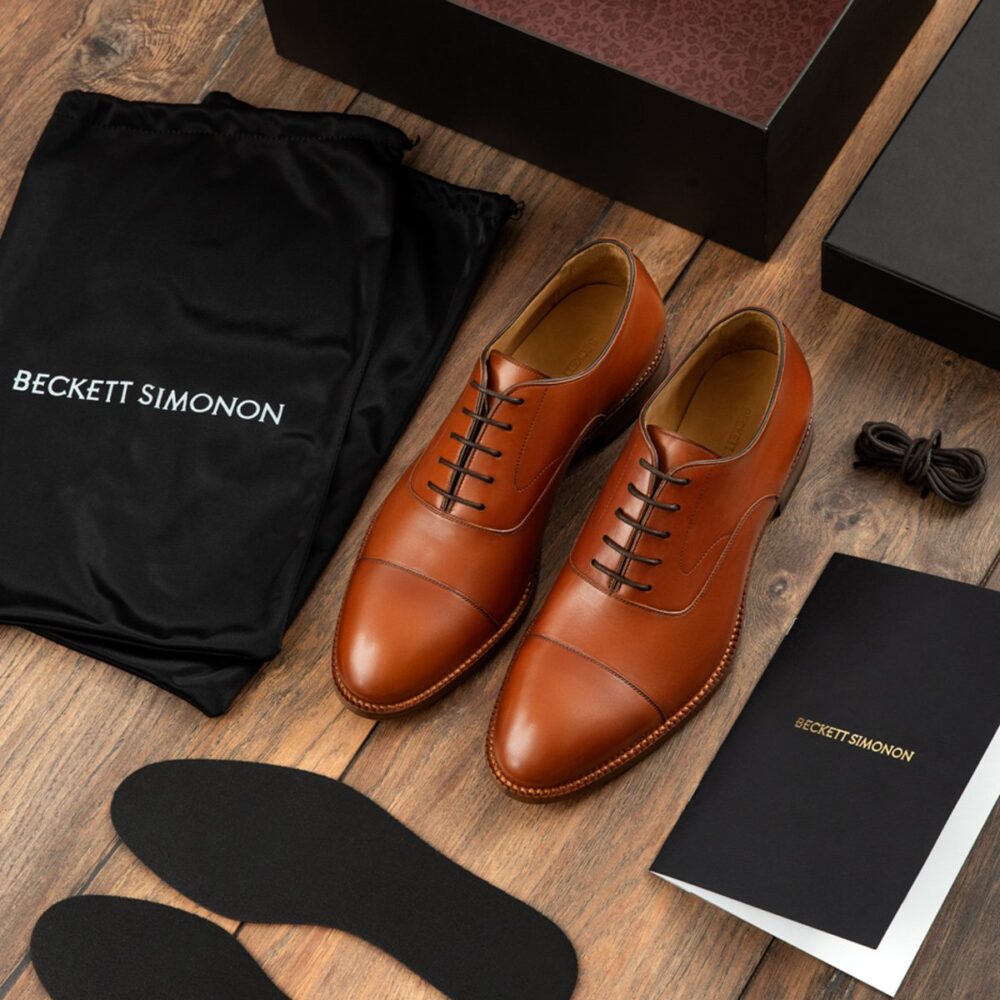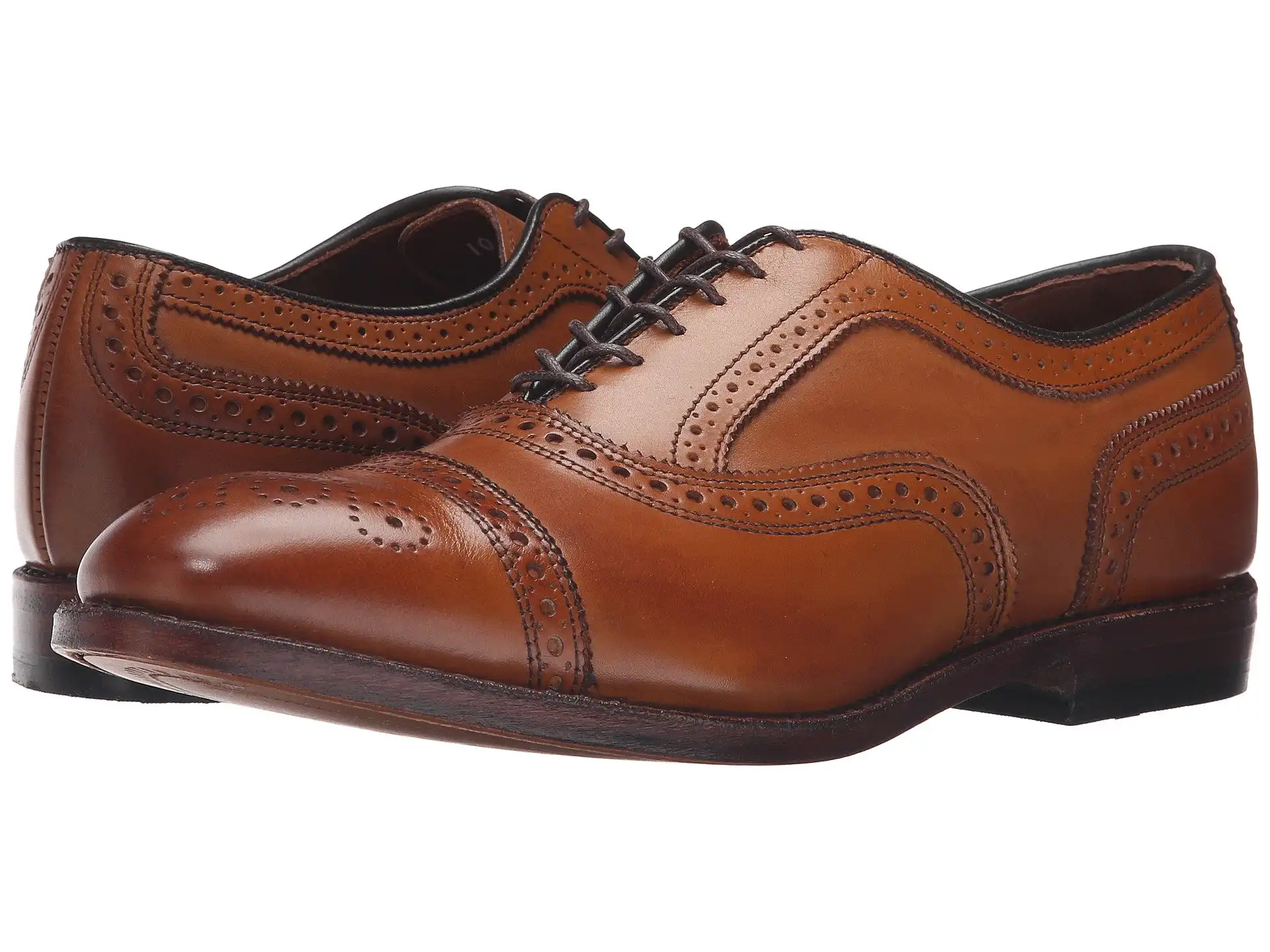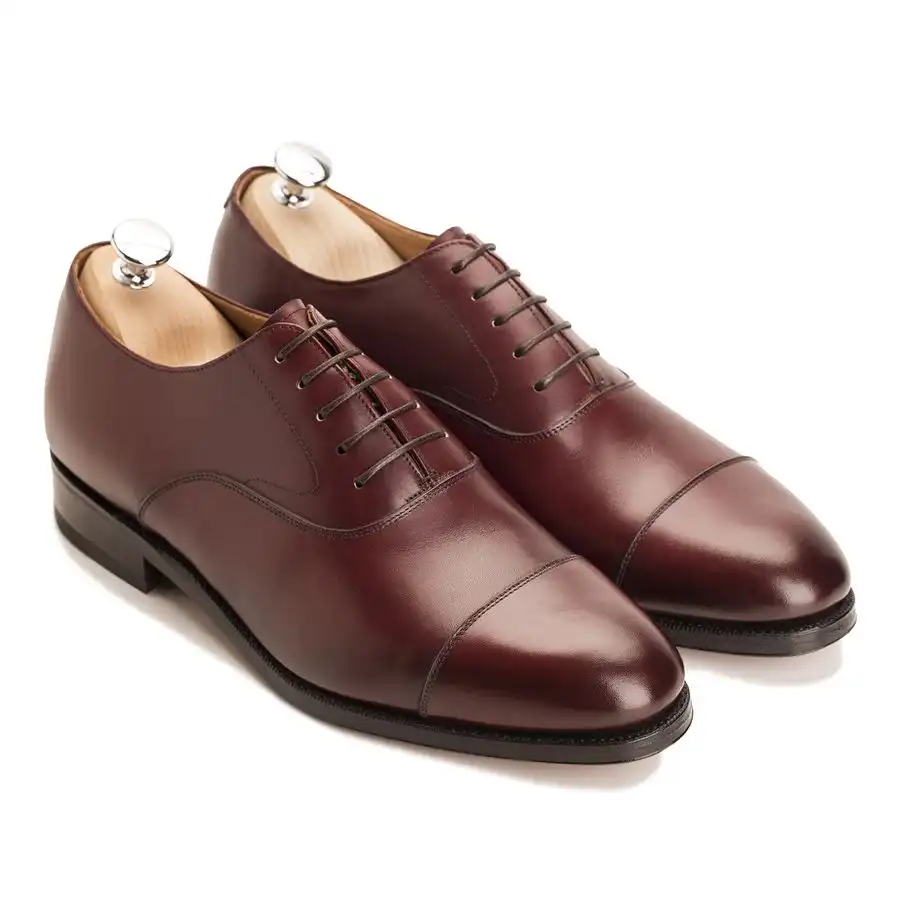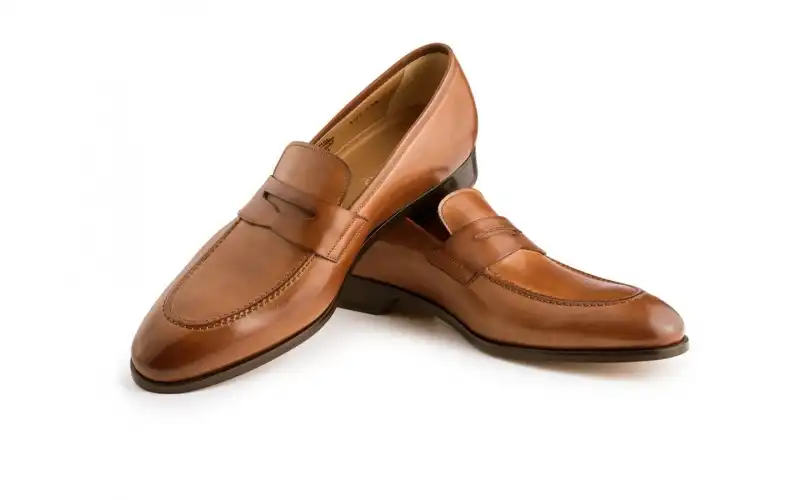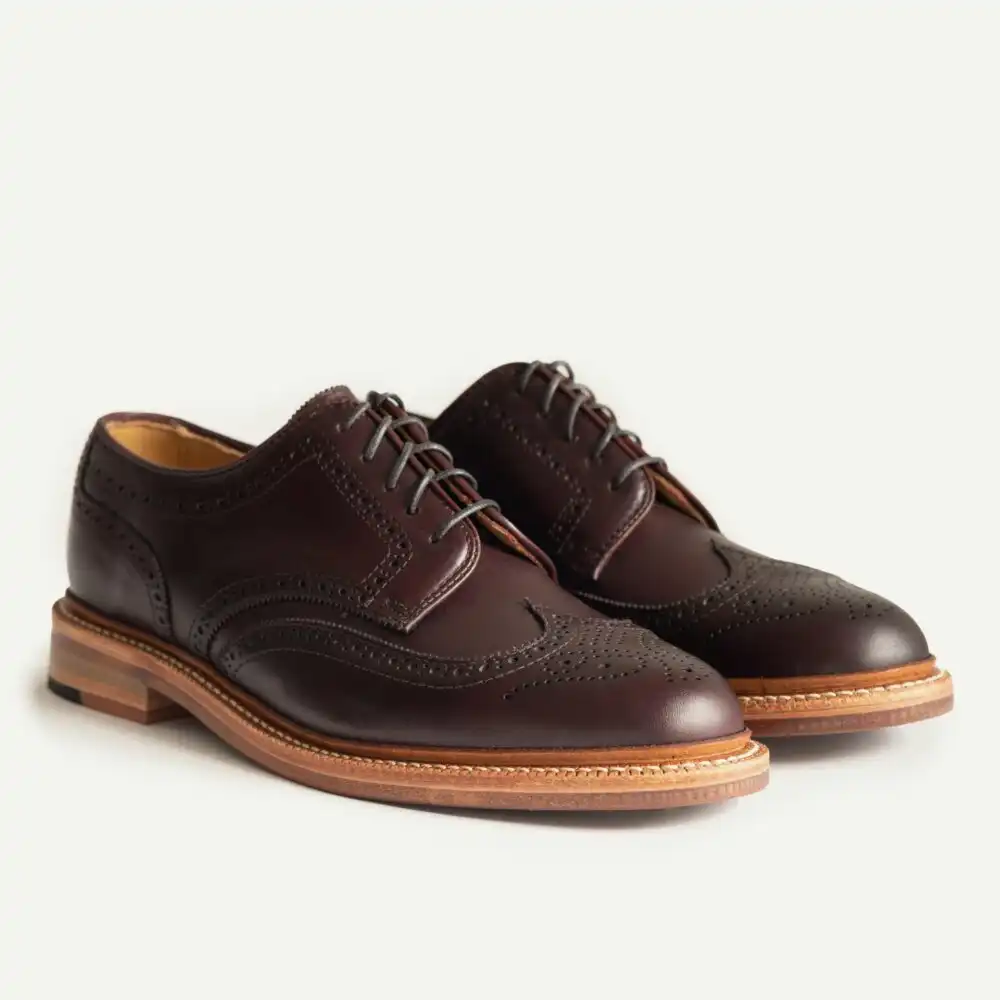Men’s shoes have been discussed on the Internet. A lot. The sheer amount of information can seem overwhelming. This guide is for the guys who want quality leather shoes, but don’t have time (or desire) to sift through all that info.
How can you choose a quality pair of leather shoes? What details should you look for?
It’s not as hard as it might seem. Simplify the process and it will be easy to choose the best leather shoes for your style and budget.
All you need to know is how to spot quality uppers, which shoe construction is best, and the difference between sole materials. Let’s begin with…
EG Recommends These Leather Shoes
Make a memorable impression with the refined elegance of the cap toe Allen Edmonds Strand lace-up oxford
Meermin is a decades-old, family-owned and operated business based in Mallorca, Spain, specializing in well-made Goodyear welted shoes.
Ace Marks is a reasonably priced, cleverly contemporary, utterly luxurious and comfortable dress shoe
Oak Street Bootmakers has handcrafted 100% of their footwear and accessories in the United States since 2010
Types of Leather for Shoes
Leather can be broadly categorized into smooth leather and suede. Each are best suited for different occasions.
Smooth Leather
Smooth leather is the most common type. Its ability to hold a shine makes it the most appropriate for formal events. However, there are different levels of quality, even within this type of leather.
Corrected Grain Leather
Corrected grain leather (abbreviated as “CG” from here on) is very different. It’s made from hides that have too many blemishes to be classified as full grain.
In order to give it a uniform appearance, CG has to be sanded down and chemically treated. This treatment removes blemishes and gives CG its unnaturally smooth, often plastic-looking appearance.
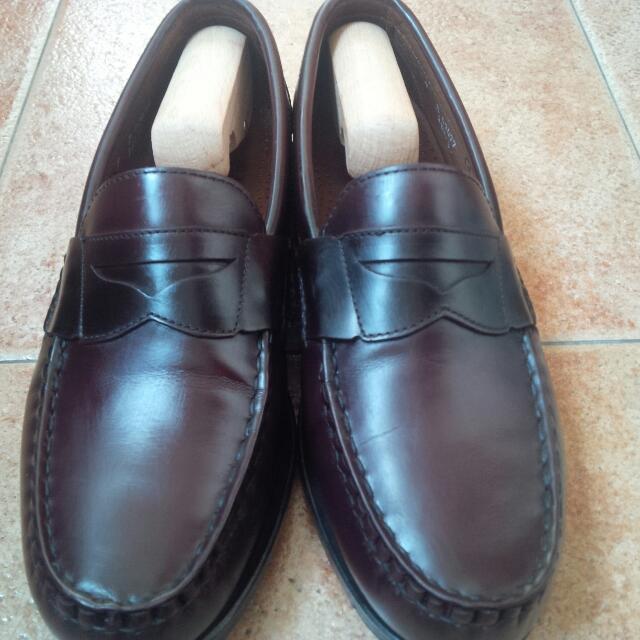
Full Grain Leather
Full grain leather is the definite choice for a pair of quality shoes. Its pores aren’t “corrected” by a chemical finish and can better absorb shoe polish. With years of proper care, full grain leather shoes will develop a beautiful, rich patina.
Because it isn’t corrected in any way (as opposed to corrected grain leather, as mentioned above), full grain leather must be relatively blemish-free.
This isn’t easy to find. Imagine the scuffs, scratches, and injuries a cow will inevitably experience throughout its lifetime.
Contrast this timeless look with the chemical finish on CG. Instead of aging into elegant footwear, CG shoes are likely to crease and crack over time.
Types of Suede
Due to the myths surrounding its fragility and need for maintenance, suede is under-appreciated by most men – and wrongfully so.
It’s a real pity, because good quality suede has a lovely, plush nap. Its depth of character is rivaled only by well-patinated leather.
The nap that gives suede its character also makes it an inherently more casual choice, especially when compared to full-grain leather. In my opinion, this makes it more versatile and more accessible for the average man, given today’s dressed-down society.
In a get-together with friends, a pair of suede shoes will fit right in. A pair of shiny leather shoes might look dressier, but they’ll also feel out of place at this kind of informal event.
Like leather, there are different grades of suede. To start with, just think of suede as the underside of your skin, with the fibers forming the suede’s nap.
The best suede is made from reverse calf – a full piece of leather, except with the skin’s underside facing outwards. This is characterised by a finer, softer nap than split-suede.
Split-suede is made from literally splitting a piece of leather down the middle and using the fibrous sides as suede, resulting in a thinner product than reverse calf.
The last type of suede made from natural materials is nubuck. It’s made by sanding down smooth leather and is less “hairy” than its above-mentioned counterparts.
There’s also synthetic suede. It is significantly more rubbery and plastic-feeling than the three types of naturally-made suede mentioned above.
Synthetic suede has a short, almost non-existent nap. A quality shoemaker will never use this, so stay clear of it.
In general, the disparity between the different types of natural suede is smaller than that between full grain and corrected grain leather. The biggest difference would be the feel of the nap, which is more a preference than a necessity.
Of course, reverse suede is thicker than split suede or nubuck, but this can be somewhat alleviated by the use of leather linings.
As for the myths surrounding suede, don’t let them put you off.
Although suede is softer to the touch than leather, it’s no less durable. In fact, suede requires less care (imagine not having to do all that shoe-polishing).
Buy a suede brush to remove any dirt. If you’re facing inclement weather, simply apply a waterproofing spray.
Leather Shoe Construction
After ensuring the quality of your uppers focus on how the soles are attached to the uppers.
In a nutshell, there are three common types of shoe construction – Goodyear welting, Blake stitching, and cementing.
Goodyear Welting
As far as ready-to-wear shoes are concerned, Goodyear welting is arguably the most desirable method of construction.
Basically, a leather welt (i.e. a strip of leather) is used to connect the upper and the outsole. A layer of cork lies between the insole and the outsole, allowing the shoe to conform to the wearer’s foot over time.
Another benefit of Goodyear welting is in the resoling process.
Other methods of construction attach the sole directly to the shoe’s uppers, making resoling extremely damaging when the sole is pried away. The leather welt minimizes this damage, extending the shoe’s lifespan.
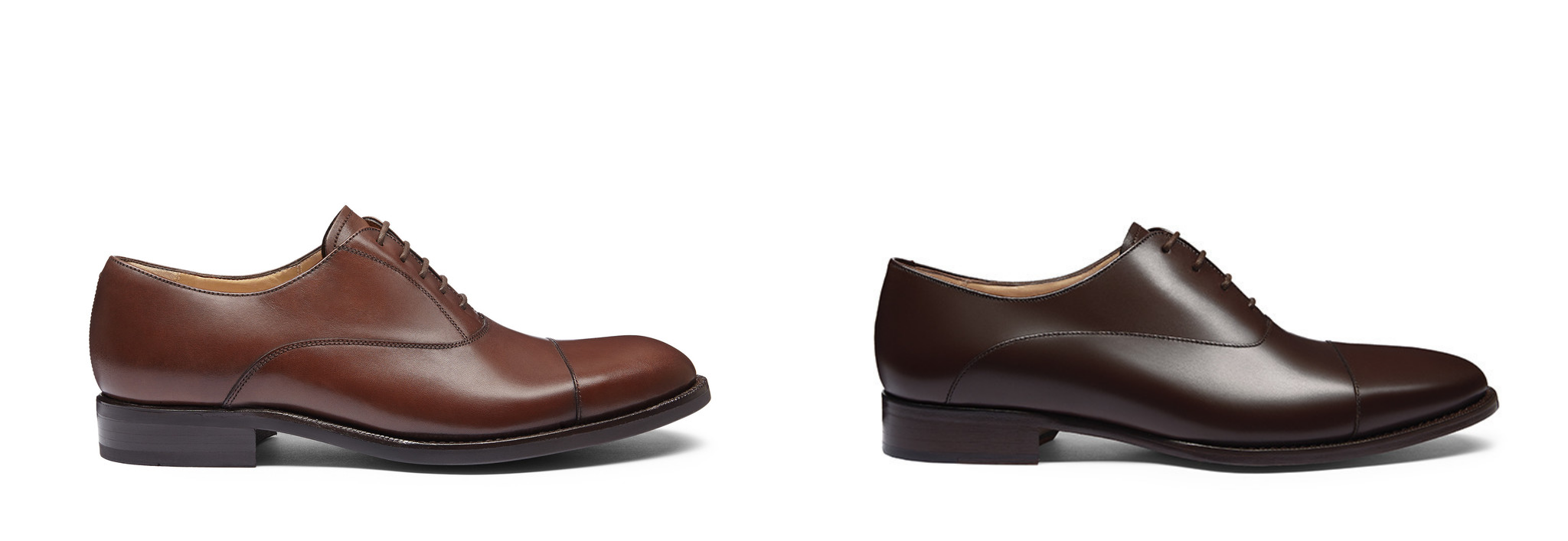
Blake Stitching
Unlike Goodyear welting, Blake stitching attaches the upper directly to the insole and outsole of the shoe.
The absence of a leather welt gives a more streamlined profile, but this comes at the expense of the ability to easily resole the shoe. Since the stitching directly joins the upper to the outsole, water is more likely to penetrate the shoe.
Cementing
Both Goodyear welting and Blake stitching have their respective benefits, and both are sturdy methods of construction. The same cannot be said of cementing, the cheapest and most inferior way of attaching a shoe’s sole.
Granted, advances have been made in the adhesives used for cementing, but they all eventually dry up – causing the sole to detach from the shoe.
This method is most suitable for semi-disposable shoes (think running shoes or sneakers), but not for a pair of leather shoes purchased with longevity in mind.
Note: Some cemented shoes have decorative stitching, masquerading as Goodyear welted or Blake stitched shoes.
To make sure the stitching is authentic, check to see if the stitches at the bottom of the sole are in line with those at the top of the welt.
Of course, sticking with reputable brands (Beckett Simonon, Allen Edmonds, Alden, Loake, Meermin, to name a few) will bypass the issue altogether.
The Best Soles For Your Leather Shoes
Whatever you do, make sure to avoid clunky rubber soles.
While they’re appropriate for tennis shoes, they’re an instant deal-breaker on any shoes meant for striking a good impression. Their inelegant profile protrudes in the worst possible manner, making your feet look bulbous.
Leather soles, on the other hand, are naturally suited for professional settings. They’re sleek, they’re handsome, and they produce a reassuring thud when walking.
That isn’t to say that any shoes with leather soles are intrinsically good quality. Still, cost-cutting shoe companies are unlikely to use them as their sole of choice – rubber soles are much cheaper, and much easier to attach.
Fortunately, there exists a compromise between these two extremes. Dainite produces rubber soles that give the grip of rubber with the elegance of leather.
Dainite soles are virtually indistinguishable from normal leather soles. And these things are incredibly durable. I own a pair of Dainite sole
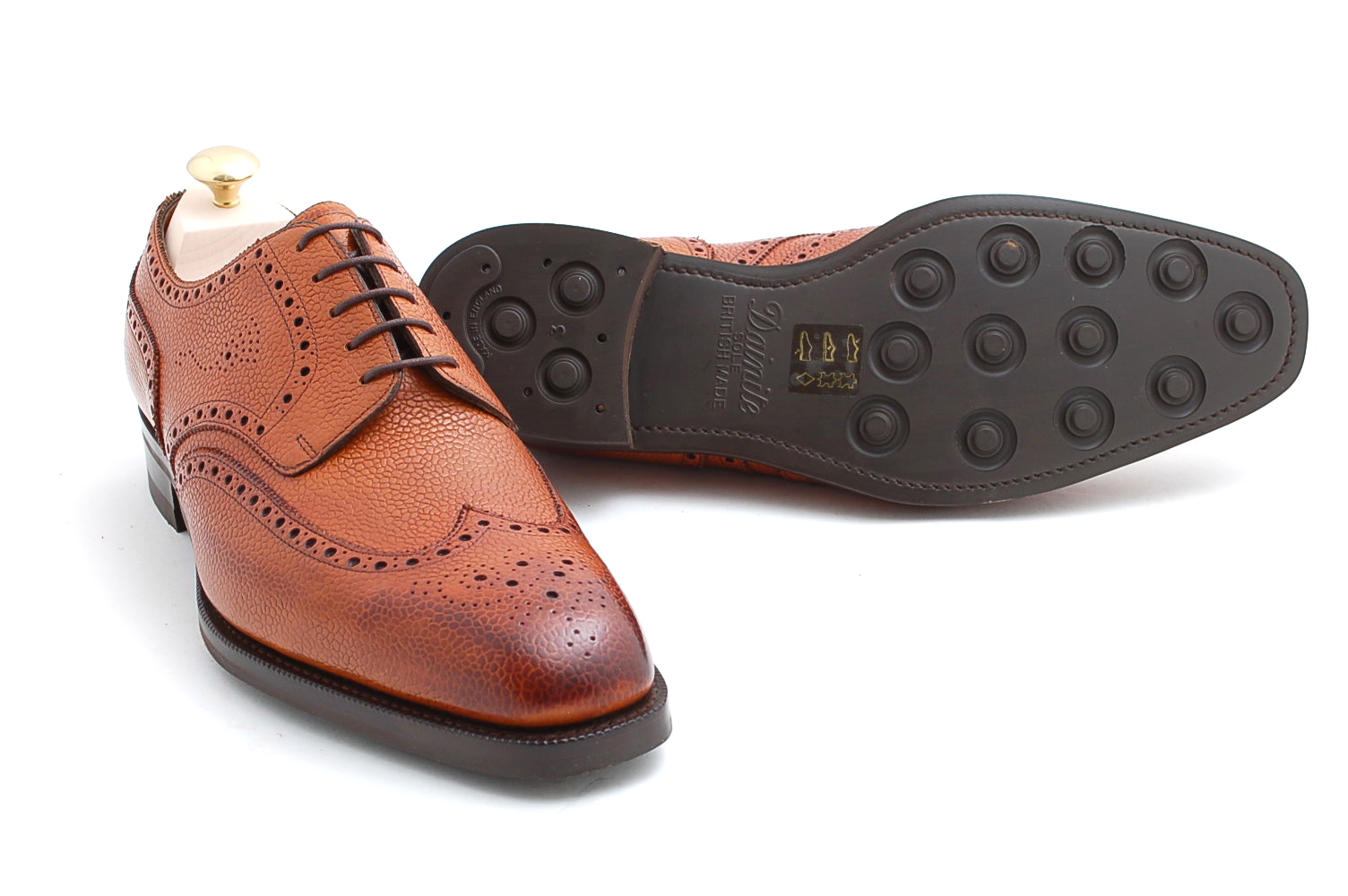
Three Essential Factors For Choosing Great Leather Shoes
Want to choose the perfect pair of top quality shoes? Always consider these 3 essential factors:
- Leather Uppers: If leather – full-grain. If suede – reverse calf, split suede, or nubuck.
- Construction: Goodyear welted or Blake stitched.
- Soles: Leather or Dainite.
Of course, there are secondary elements that determine the quality of a pair of shoes – like lining, shape, and style. But these shouldn’t be your priority.
Focus on the three essentials first, purchase from a reputable shoemaker, and the rest will follow naturally.
Was that helpful?
If you have any questions or comments, DM me on Instagram! I’m also on Twitter and Effortless Gent’s Facebook page.
Images via author, Jack Erwin, Leffot

